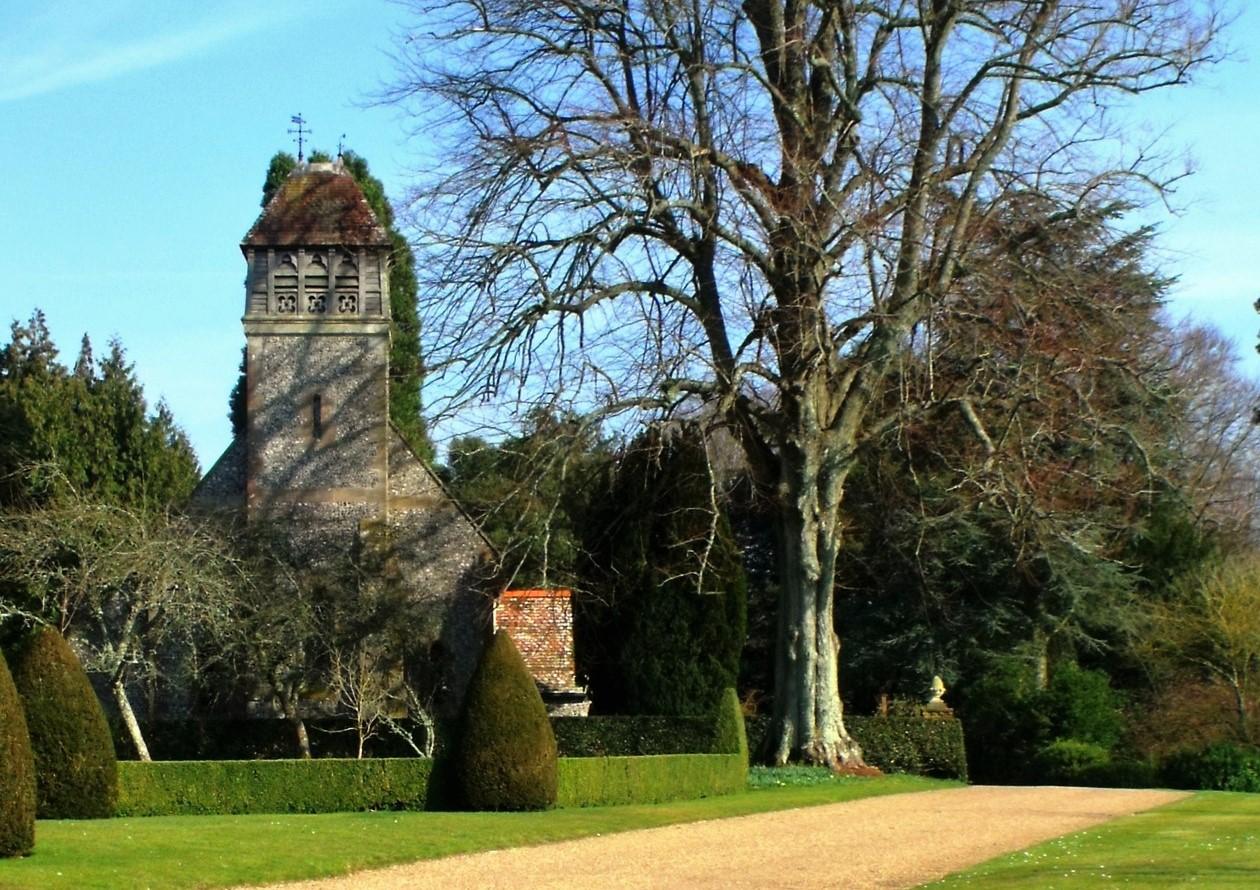St Andrew
Kilmeston, Hampshire
This small church, which is a haven for peace and quiet, is situated beside the Wayfarers’ Walk, a short walk from Hinton Ampner and its National Trust property and church.

On a hill, high above a crystal clear pond, the source of the River Itchen, is a tranquil little Saxon church, and below it the ancient village of Hinton Ampner.
Hinton Ampner, Hampshire
This little Saxon church of All Saints served the families of Hinton Ampner estate before the House was donated to the National Trust by Ralph Dutton in 1985.
Although not part of the National Trust, it remains a thriving church open daily to visitors, with regular Services. Today’s improvements include the introduction of the latest 21st century sound and lighting systems.
Hinton was first recorded in the Domesday Book as 1 church, 15 villagers, 14 smallholders and 6 slaves.
All Saints was probably used by the Parliamentarians, led by Sir William Waller, at the Battle of Cheriton, 1644. A turning point in the Civil War, he drove the Royalists back to Basing, where they were eventually defeated. The battle’s start line is the old Winchester toll road you used to get here.
The oak Vestry door and carved inscription ‘Given by Nicholas Lacey’ is a reminder of that period. Another war, the same place of refuge! Portsmouth High School evacuated to Hinton Ampner House during WWII, a photograph of the girls hangs just inside All Saints door.
All Saints retains pre Conquest work, but was largely rebuilt in 13th century. The Royal Arms you see above the entrance to the Chancel is found in around 15% of churches. Royal Arms first appeared when Henry VIII became Supreme Head of the Church. They symbolise the King’s authority. The history of All Saints Royal Arms, above the entrance to the chancel, is more recent. It was bought at auction by Ralph Dutton during the 1960-80’s.
On its right is an Edward Barnsley Priest’s stall. His Petersfield workshop also crafted Canterbury Cathedral’s Archbishop’s stall, and the oak boards used by the Domesday Book at the National Archives, Kew.
Above the altar are two beautiful 1970 stained glass windows depicting the exodus of the Hebrews from Egypt, led by Moses; the Pillars of cloud and fire from Exodus. Other examples of Reyntien’s work are found in the cathedrals at Coventry, Liverpool and Llandaff.
The tranquillity of All Saints is captured in Gladys Trickle’s poem you will find by the candle stand and prayer cards.
Kilmeston, Hampshire
This small church, which is a haven for peace and quiet, is situated beside the Wayfarers’ Walk, a short walk from Hinton Ampner and its National Trust property and church.
Bramdean, Hampshire
New Alresford, Hampshire